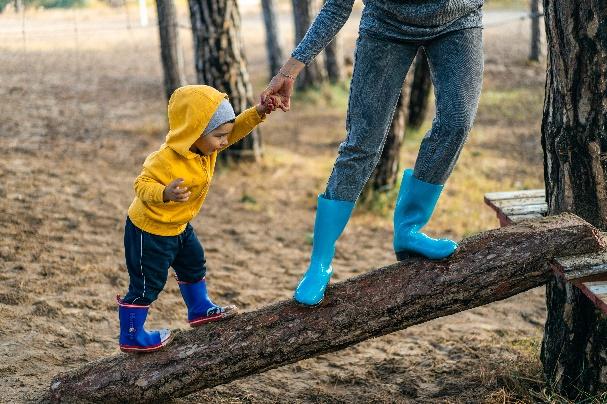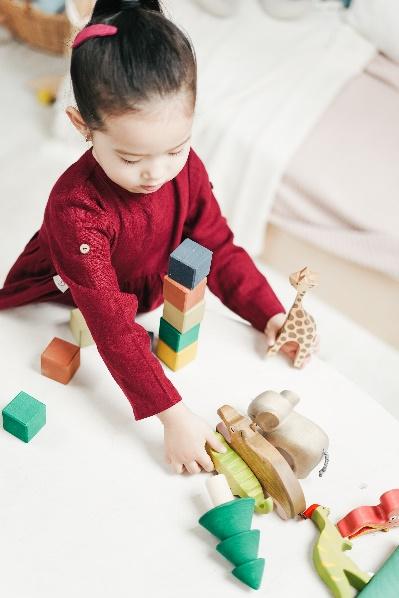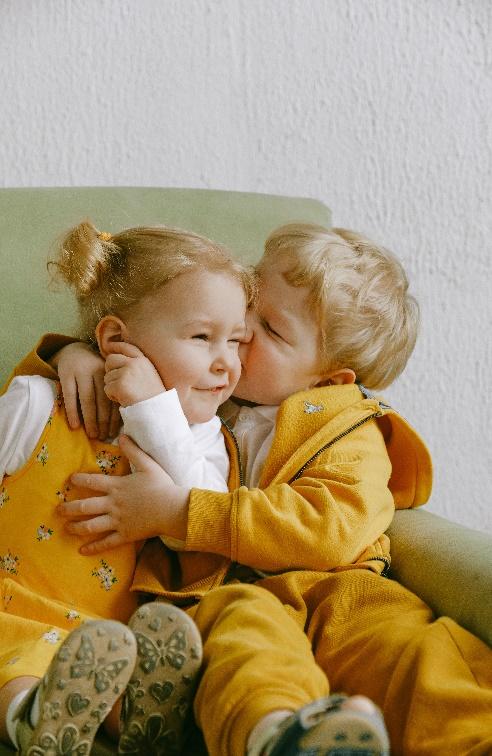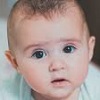|

|
Pause to Reflect
When you think about young children, what images emerge for you? How do you see them? What are some words that you may use to identify them?
|
When thinking about children, what comes to your mind? Is it the way they engage with you? Is it their sense of adventure? Is it watching them try to climb a ladder? Is it trying to figure out what they may be thinking about when they have a certain look on their faces that they are not yet able to articulate? Is it their obvious curiosity and imagination? This is how we begin to think of the child as a whole, complex being. An integrated, interrelated series of parts that become the “whole.”

Figure \(\PageIndex{1}\): Does an image like this come to mind when you think of children? [49]
In the field of Early Childhood Education, we identify these areas of development as domains. These domains (areas) are as follows:
Physical Development
Physical or physical motor development includes their large or gross motor development, their fine motor development, and their perceptual-motor development. The large or gross motor development of children consists of their large motor groups – running, jumping, skipping, swinging with their arms – in other words, the muscle groups that are closer to the body. The fine motor development of children consists of the small motor groups, like writing with their hands, squishing sand in-between their toes – muscle groups that are further away from the body. The last area of physical development is the perceptual-motor – their ability to catch a ball, to use a paintbrush and paint to create something from their memory – in other words, it refers to a child’s developing ability to interact with their environment by combining the use of the senses and motor skills.
The first few years of life is dedicated to the heightened development of these skills. In the first year of life, they go from barely being able to hold their head up to walking upright. As many of you taking this course have varied experiences with children, this may be a refresher, but for some of you, this may be new information. It is crucial to the development of children, that they have many opportunities to use their bodies as their body is developing new pathways for success. In an early learning environment serving children from 0 – 5, there should be ample space and materials for children to explore and practice their emerging physical skills. This includes allowing them to take risks with their bodies allowing them to explore the possibilities. These risks afford children opportunities to feel that they are capable as well as gives them a sense of agency.

Figure \(\PageIndex{2}\): What physical motor skills is this child practicing? [50]
Cognitive-Language Development
Cognitive or brain development speaks to how we process information, our curiosity/imagination, long and short-term memory, problem-solving, critical thinking, language both receptive and expressive, beginning reading, computing skills, creativity, etc. In other words, how our brain develops to help us to think about and understand the world around us.
We often place much emphasis on this area of development to the determent of the other areas of development. They all work in concert. When thinking about developing the “whole child” we need to be mindful of providing experiences that promote all of their development, not just their cognitive development.
As with the other areas/domains of development, the first 5 years of life are important in establishing the foundation for learning. This includes providing lots of rich experiences for exploration, curiosity, imagination, use of materials and equipment (that also fosters physical development), opportunities for talking (even with pre-verbal babies), etc. The learning experiences that we provide for children will be discussed in Chapter 6 - Curriculum and Chapter 7 - Learning Environments. Both of those chapters are dedicated to looking at the learning experiences (curriculum) and the environments we set up to support children’s whole development.
Social-Emotional Development
Social-emotional development is the relationships that children have with themselves and others, the way they feel about themselves or their self-concept, the way they value themselves or their self-esteem, and he ability to express their feelings to themselves and others.
One of the important dispositions of being an early childhood professional is supporting children’s well-being. It is both a moral and ethical responsibility. By nature, children are trusting and look to the adults in their world to provide them with the necessary skills to be successful in their life’s journey. We can either elevate or diminish a child.

Figure \(\PageIndex{3}\): What relationship do you think these two children have? [51]
Spiritual Development
Spiritual development, or considering the “spirit” of the child, is something that is a more recent addition to thinking about “whole child” development. In a recent article entitled Supporting Spiritual Development in the Early Childhood Classroom by Amelia Richardson Dress, she cites emerging research that indicates the importance of considering this element of a child. “Spirit is the thing that makes us us. Spirituality is the way we connect our ‘inner us’ to everything else, including other people’s inner ‘usness.” [52] Our spiritual development is a part of our social-emotional development; however, we find it important to call this out specifically to guide our practice of supporting and elevating children’s uniqueness. In Chapter 6 Curriculum, it looks at how to support children’s curiosity. Curriculum that is based on children’s interests, engages their curiosity, is playful, and provides trust, elevates how children see themselves as dynamic, competent human beings. Simply by providing rich, open-ended materials and encouraging their natural desire to ask questions, we support a child’s sense of wonder.






